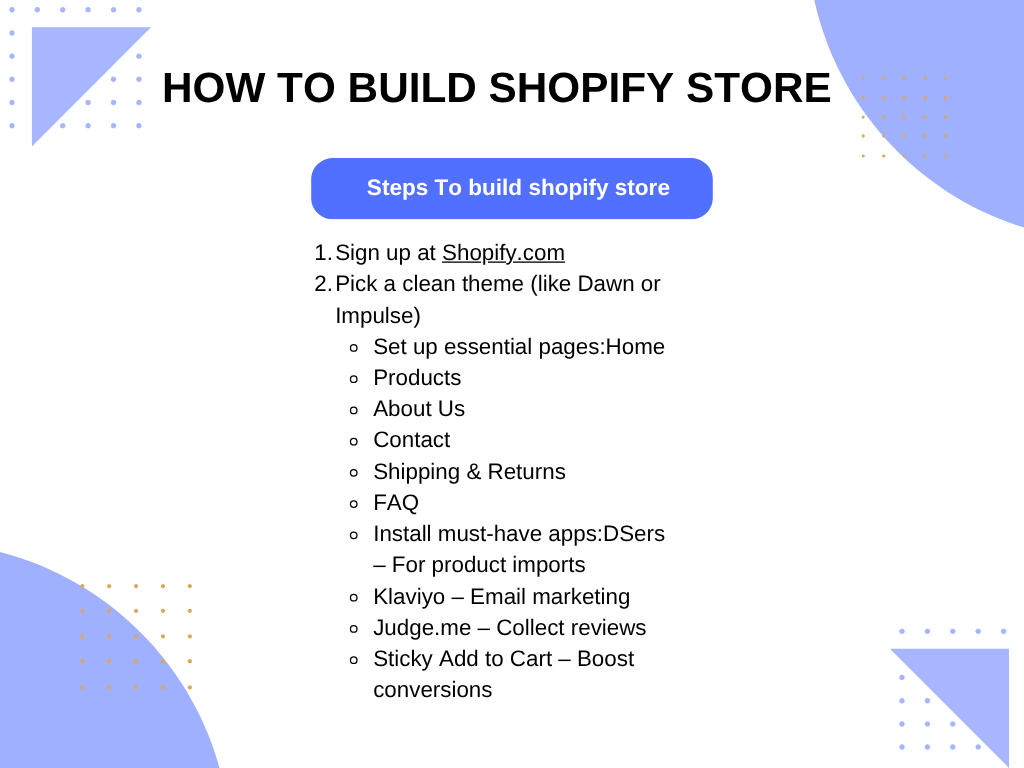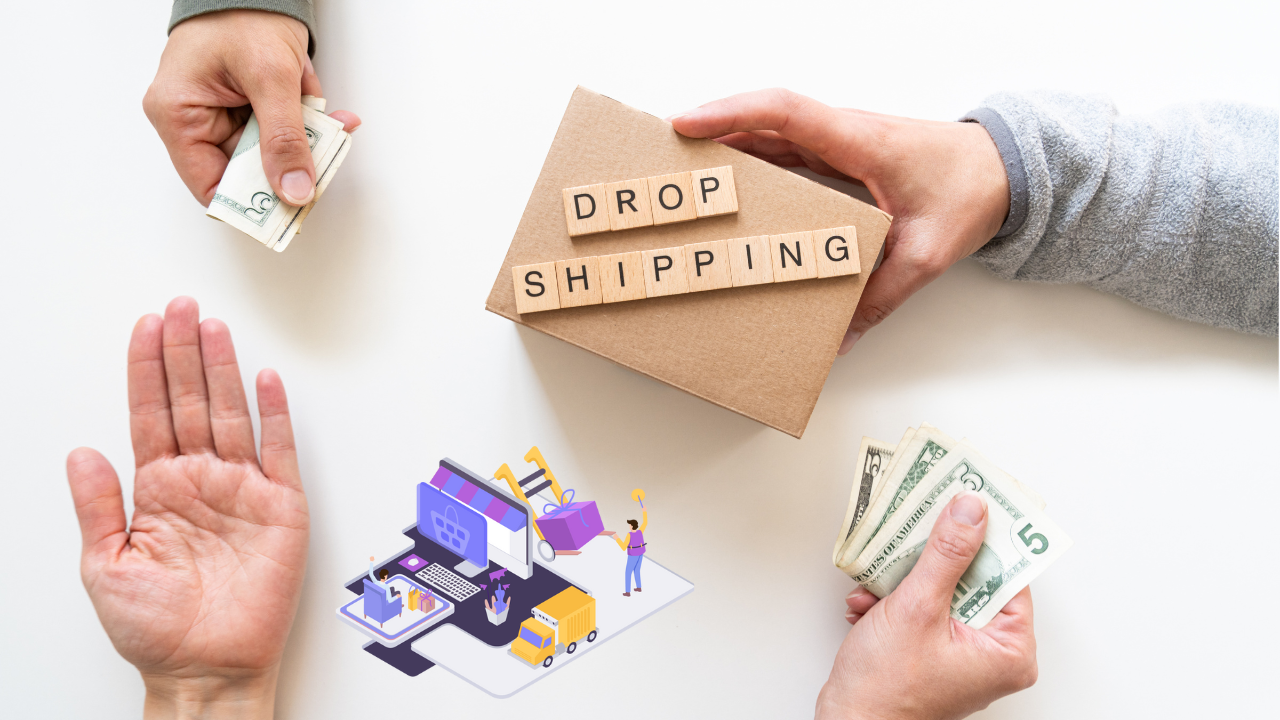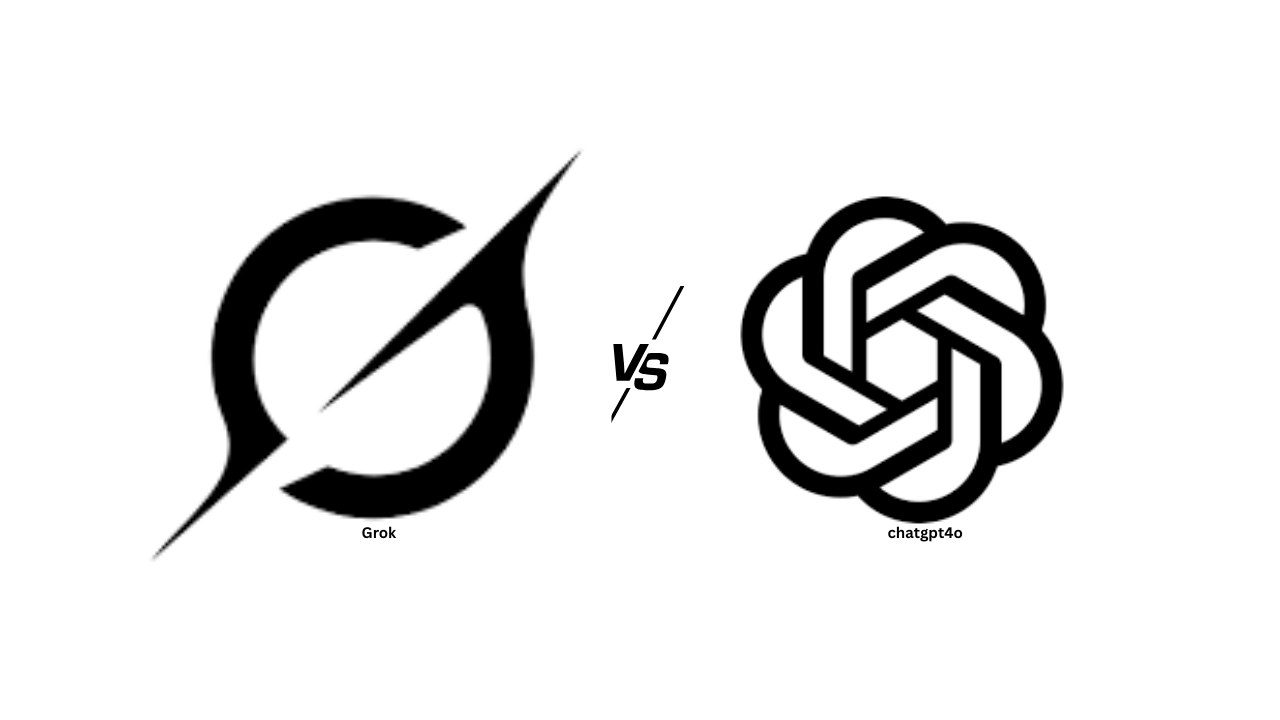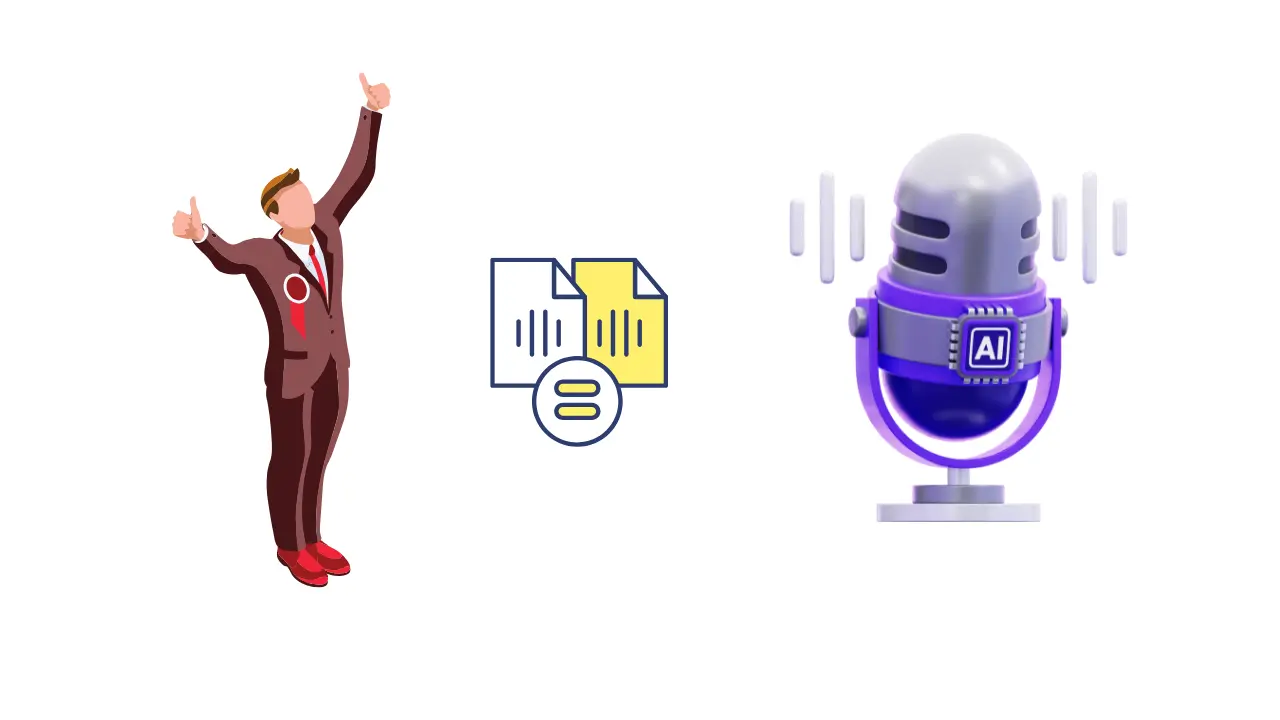In the ever-growing eCommerce world, dropshipping has emerged as one of the most profitable and low-risk business models. But building a 6-figure dropshipping store doesn’t happen by accident — it requires strategy, patience, and execution.
Goal: Create a long-term, profitable dropshipping business that can generate $100,000 or more annually through smart planning, proven strategies, and constant optimization.
Step 1: Understand the Dropshipping Model
Before anything else, you need a clear understanding of how the dropshipping business model works.
What is Dropshipping?
Dropshipping is a business model where you create an online store—most commonly using platforms like Shopify—and list products that you don’t actually keep in stock. Instead of purchasing inventory upfront, you source products from third-party suppliers such as AliExpress or CJ Dropshipping.
Once a customer places an order through your store, you then go and purchase that item from your chosen supplier.
The key advantage here is that the supplier handles everything related to inventory and shipping, sending the product directly to your customer on your behalf.
You never have to touch the product physically. Your earnings come from the difference between the price you charge on your website (the retail price) and what you pay the supplier (the wholesale price).
For example, if you list a product for $40 and your supplier charges you $25, your profit is the $15 margin. This model allows you to start an online business with minimal upfront investment and without worrying about warehousing or logistics.
Benefits Of Dropshipping:
- Low upfront cost (no inventory).
- Test products easily without large investments.
- Scalable with automation.
- Ideal for beginners with a limited budget.
The biggest mistake is thinking dropshipping is passive income. It requires serious work and a solid system.
Step 2: Choose a Profitable Niche
Your niche is the product category or industry you want to sell in. Choosing the right one determines your success.
Some Good Niches For Dropshipping Business
When choosing products to sell through your dropshipping store, it’s important to focus on items that not only attract attention but also convert into sales.
Some of the best-performing products fall into evergreen or trending niches—categories like health, pets, fitness, and baby care. These are areas where people are constantly looking for new solutions and often spend money repeatedly.
For example, a parent always wants the best for their baby, just as a pet owner is always on the lookout for fun or useful items for their furry friend. Within these niches, problem-solving products tend to do exceptionally well. Items like posture correctors, portable blenders, or even phone stands serve a clear purpose and make life easier for customers—making them more likely to buy on impulse.
Another key factor is targeting a passionate audience. People who are truly enthusiastic about something—whether it’s their pets, gaming setup, or personal fitness—tend to shop more often and spend more on products that align with their interests.
They’re emotionally invested, which can lead to strong brand loyalty and repeat purchases. It also helps if the product has a high perceived value. Even if something only costs a few dollars to source, if it looks premium or solves a real problem, customers are often willing to pay much more.
Lastly, from a logistical point of view, it’s smart to prioritize items that are lightweight, compact, and ideally priced under $50.
These products are easier and cheaper to ship, face fewer customs issues, and are more likely to be purchased without hesitation. Combining all these factors creates a winning formula for finding products that sell well and are practical to manage through dropshipping.
Tools to get product idea:
- Google Trends – Spot seasonality and demand
- Sell The Trend – Product & niche discovery
- TikTok/Instagram – See what’s trending organically
- Keyword Planner – Check monthly search volume
Tip: Avoid general stores. Focus on one niche to build a brand and scale easily.
Step 3: Conduct Competitor Research
You don’t need to reinvent the wheel. Instead, find successful stores in your niche and reverse engineer what they’re doing.
The Competitor Research Strategy:
When analyzing successful dropshipping stores, there are several key areas you should pay close attention to in order to understand what’s working for them—and how you can apply those insights to your own business.
Start by exploring their best-selling products. These are usually displayed on their homepage, under “Trending” or “Customer Favorites,” or you might spot them based on the number of reviews and social shares.
Pay attention to what kind of products they’re promoting: are they practical, problem-solving, or emotionally appealing? This can tell you a lot about what their audience values most.
Next, take a look at their pricing strategy. Are they pricing affordably to encourage impulse buys, or are they positioning their products as premium items with higher price tags and a luxury feel?
Compare the product cost (if you can find it on platforms like AliExpress) with their selling price to estimate their profit margins. This can also help you decide how much room you have to play with your own prices.
Another important element is how they write their product descriptions. Are the descriptions short and benefit-focused, or are they detailed with storytelling and lifestyle examples?
Some of the best-performing stores know exactly how to speak their customers’ language, using persuasive yet conversational copy that builds trust and interest. Pay attention to whether they use bullet points, emotional triggers, or social proof.
Also, don’t overlook their website layout and design. Is the website clean, modern, and easy to navigate? Does it build trust with clear policies, high-quality images, and fast loading times? A well-designed site can significantly boost conversions and reduce bounce rates, especially if it’s mobile-friendly.
Then move on to their ads on platforms like Facebook and TikTok. Use tools like the Facebook Ad Library or TikTok Creative Center to find their active campaigns.
Study the videos, headlines, hooks, and call-to-actions they’re using. Look at the engagement—likes, shares, comments—to see what kind of content is resonating with people. These insights can give you direction for crafting your own compelling ads.
Lastly, dig into their customer reviews and complaints. What are buyers consistently praising or complaining about? This is a goldmine of information. Positive reviews reveal what people love most, which you can highlight in your own marketing.
Complaints, on the other hand, can show you what to improve or avoid altogether. Learning from both the wins and mistakes of your competitors gives you a major advantage in building a strong and successful store.
Tools for Competitive Research:
- Koala Inspector – View competitors’ Shopify store data
- Facebook Ad Library – Spy on running ads
- SimilarWeb – Analyze traffic sources
- PipiAds / BigSpy – Spy on TikTok ads
Tip: Identify what your top 3 competitors are doing better — and do it 10% better.
Step 4: Find a Reliable Supplier
A bad supplier can ruin your reputation. You need fast delivery, good communication, and consistent product quality.
Best Supplier Platforms:
- AliExpress – Best for beginners and testing
- CJ Dropshipping – Faster shipping, better packaging
- Spocket – US & EU suppliers for 2–5 day shipping
- Zendrop / AutoDS – Beginner-friendly, semi-automated
Points To Consider
- High order count & reviews
- Ships from US/Europe if possible
- Accepts PayPal or credit card
- Responsive customer service
Tip: Order the product yourself before launching to check quality and delivery time. This is the most important step. Always remember the customer wants quality not quantity not discount.
Step 5: Build Your Shopify Store
Shopify is the easiest and most scalable platform for building dropshipping stores.
How to Build:
- Sign up at Shopify.com
- Pick a clean theme (like Dawn or Impulse)
- Set up essential pages:
- Home
- Products
- About Us
- Contact
- Shipping & Returns
- FAQ
- Install must-have apps:
- DSers – For product imports
- Klaviyo – Email marketing
- Judge.me – Collect reviews
- Sticky Add to Cart – Boost conversions
Best Practices:
- Use clear images & videos
- Write benefit-driven product descriptions
- Add trust signals (secure checkout, money-back guarantee)
Tip: Keep your homepage minimal. Guide users straight to your best-selling product.

Step 6: Price Your Products for Profit
Set a price that covers your costs and leaves room for advertising and profit.
Example:
- Product cost: $8
- Shipping: $2
- Ad cost per sale: $10
- Total cost = $20
- Price it at: $39.99+ (for $20 profit margin)
Tools to Calculate Profit Margin:
- Shopify Profit Calculator
- AliHunter Chrome extension (analyzes competitor pricing)
Tip: Try “psychological pricing” like $29.99 instead of $30.
Step 7: Launch with Paid Ads
Ads help you validate your product fast. Facebook/Instagram ads are great for testing. TikTok ads are amazing for younger audiences and viral products.
How to Test a Product:
- Create 3–5 ad creatives (use Canva or InVideo)
- Target broad interests related to your product
- Spend $20–$50/day for 3–5 days
- Monitor metrics: CTR, CPM, CPC, ROAS
Scaling Plan:
- Scale winning ads by 20–30% every 2–3 days
- Duplicate ad sets and test new audiences
- Retarget viewers and cart abandoners
Tip: Focus on scroll-stopping videos in the first 3 seconds. Use UGC or TikTok-style content.
Step 8: Improve Your Conversion Rate
If you get traffic but no sales, it’s a conversion issue, not a product issue.
Optimize Your Store:
- Add real reviews with images
- Add free shipping timer
- Use clear call-to-action buttons
- Show stock scarcity or countdown
- Offer bundle deals or discounts
Tip: Use Hotjar to watch user behavior on your site. It’s a goldmine for conversion optimization.
Step 9: Automate & Scale the Business
As sales grow, you don’t want to spend all day manually processing orders. Time to automate and scale.
Automation Tools:
- DSers / AutoDS – Auto-order fulfillment
- Klaviyo – Email automations (abandoned cart, welcome, upsells)
- ReConvert – Upsells after purchase
- Zapier – Connect apps and automate tasks
Scaling Plan:
- Increase ad budget
- Launch new products in your niche
- Set up email flows and SMS marketing
- Hire a virtual assistant for customer service
Tip: Start building a brand — use custom packaging, logos, and eventually private labeling.
Step 10: Track Performance & Reinvest Wisely
Data is everything in dropshipping. You need to track the right KPIs (key performance indicators) to grow.
Key Metrics:
- Conversion rate (goal: 2%+)
- AOV (Average Order Value) (goal: $40–$60)
- ROAS (Return on Ad Spend) (goal: 2x–3x)
- CLV (Customer Lifetime Value)
Reinvest in:
- Better creatives
- Influencer campaigns
- Email & SMS marketing
- Product R&D or branding
Tip: Use Triple Whale or BeProfit for advanced analytics and profit tracking.
Realistic 6-Figure Timeline:
| Month | Focus Area |
|---|---|
| 1 | Research & store setup |
| 2 | Test products, optimize store |
| 3–4 | Identify a winning product, scale ads |
| 5–6 | Automate tasks, improve margins |
| 6–12 | Expand product line, build brand |
Conclusion
So, we have studied that building a 6-figure dropshipping store in 2025 is absolutely possible — but not guaranteed. It takes grit, strategic thinking, and smart execution. If you’re ready to treat it like a real business, test consistently, and optimize every detail, success will follow.
For more technology news visit.





